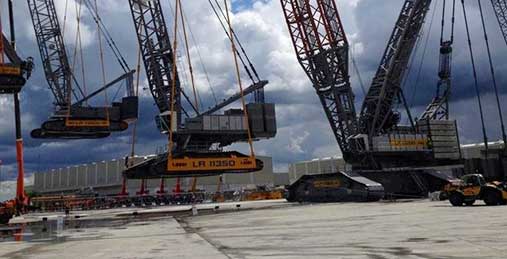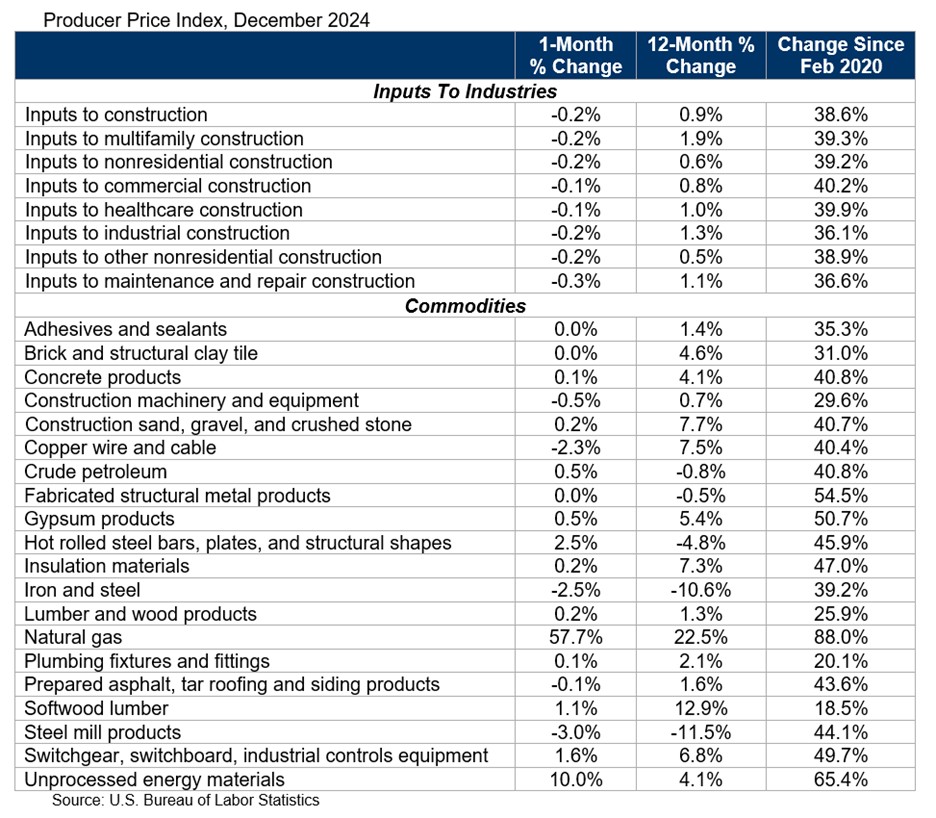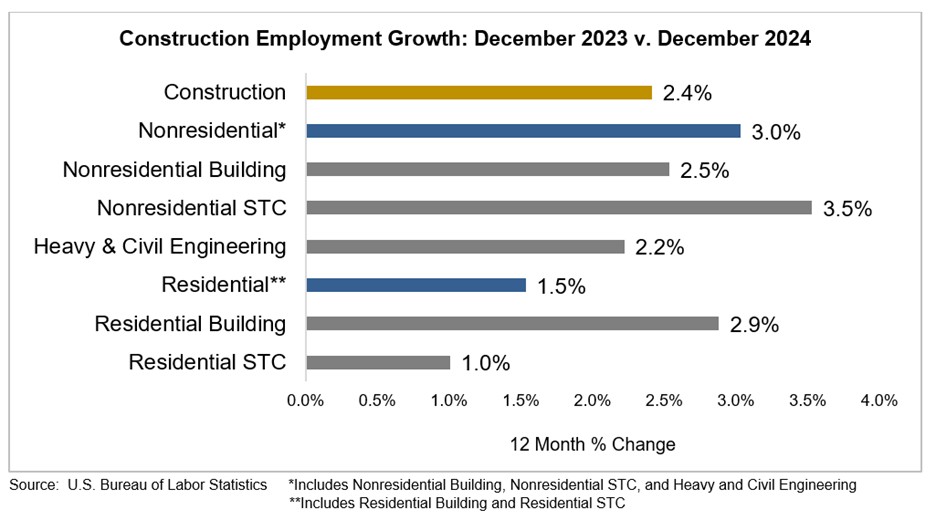National nonresidential construction spending decreased .2% in December 2024, according to an Associated Builders and Contractors’ analysis of data published by the U.S. Census Bureau. On a seasonally adjusted annualized basis, nonresidential spending totaled $1.241 trillion. Spending was down on a monthly basis in 9 of the 16 nonresidential subcategories. Private nonresidential spending increased .1%, while public nonresidential construction spending was down .5% in December. According to ABC Chief Economist Anirban Basu, public sector nonresidential spending fell sharply in in the last month of 2024, but that decline, he said, was likely a short-term phenomenon as the transition between presidential … Read more
ABC: Record-High 89.7% of US Construction Workers Are Not Union Members
According to an Associated Builders and Contractors’ analysis of the U.S. Bureau of Labor Statistics’ 2024 Union Members Summary released, a record low 10.3% of the U.S. construction industry belongs to a union, a decrease from the prior historic low of 10.7% in 2023. BLS reports that 7,978,000 construction industry workers were not members of a union in 2024, a 12,000-person increase from 7,966,000 workers in 2023, while union membership decreased by 38,000 to 916,000. The construction industry shrunk by 26,000 workers, from 8.92 million in 2023 to 8.894 million in 2024. To view a detailed summary, click here.
ABC: Construction Materials Prices Inch Down .2% in December, Up .9% Year Over Year
Construction input prices decreased .2% in December compared to the previous month, according to an Associated Builders and Contractors analysis of U.S. Bureau of Labor Statistics’ Producer Price Index data released today. Nonresidential construction input prices also decreased .2% for the month. Overall construction input prices are .9% higher than a year ago, while nonresidential construction input prices are .6% higher. Prices increased in all three energy subcategories last month. Natural gas prices were up 57.7%, while unprocessed energy material prices increased 10%. Crude petroleum prices rose slightly, by .5%. “Construction materials prices declined slightly in December and are virtually … Read more
ABC: Construction Underperforms Broader Economy in December Jobs Report
The construction industry added just 8,000 jobs on net in December, according to an Associated Builders and Contractors’ analysis of data released by the U.S. Bureau of Labor Statistics. On a year-over-year basis, industry employment has increased by 196,000 jobs, an increase of 2.4%. Nonresidential construction employment increased by 4,700 positions on net, with growth in all three subcategories. Nonresidential specialty trade added the most jobs, increasing by 3,900 positions. Heavy and civil engineering added 600 jobs, while nonresidential building added 200 jobs. The construction unemployment rate rose to 5.2% in December. Unemployment across all industries decreased from 4.2% in … Read more
ABC: Nonresidential Construction Spending Dips .1% in November, Flat Year Over Year
National nonresidential construction spending declined .1% in November, according to an Associated Builders and Contractors’ analysis of data published by the U.S. Census Bureau. On a seasonally adjusted annualized basis, nonresidential spending totaled $1.234 trillion. On a year-over-year basis, nonresidential construction spending is up 2.8%, approximately flat in inflation-adjusted terms. Spending was down on a monthly basis in 8 of the 16 nonresidential subcategories. Private nonresidential spending was unchanged, while public nonresidential construction spending was down 0.2% in November. “Contractor confidence surged post-election,” said ABC Chief Economist Anirban Basu. “Many contractors expect a combination of deregulation and tax cuts to … Read more












 Join our thriving community of 70,000+ superintendents and trade professionals on LinkedIn!
Join our thriving community of 70,000+ superintendents and trade professionals on LinkedIn! Search our job board for your next opportunity, or post an opening within your company.
Search our job board for your next opportunity, or post an opening within your company. Subscribe to our monthly
Construction Superintendent eNewsletter and stay current.
Subscribe to our monthly
Construction Superintendent eNewsletter and stay current.